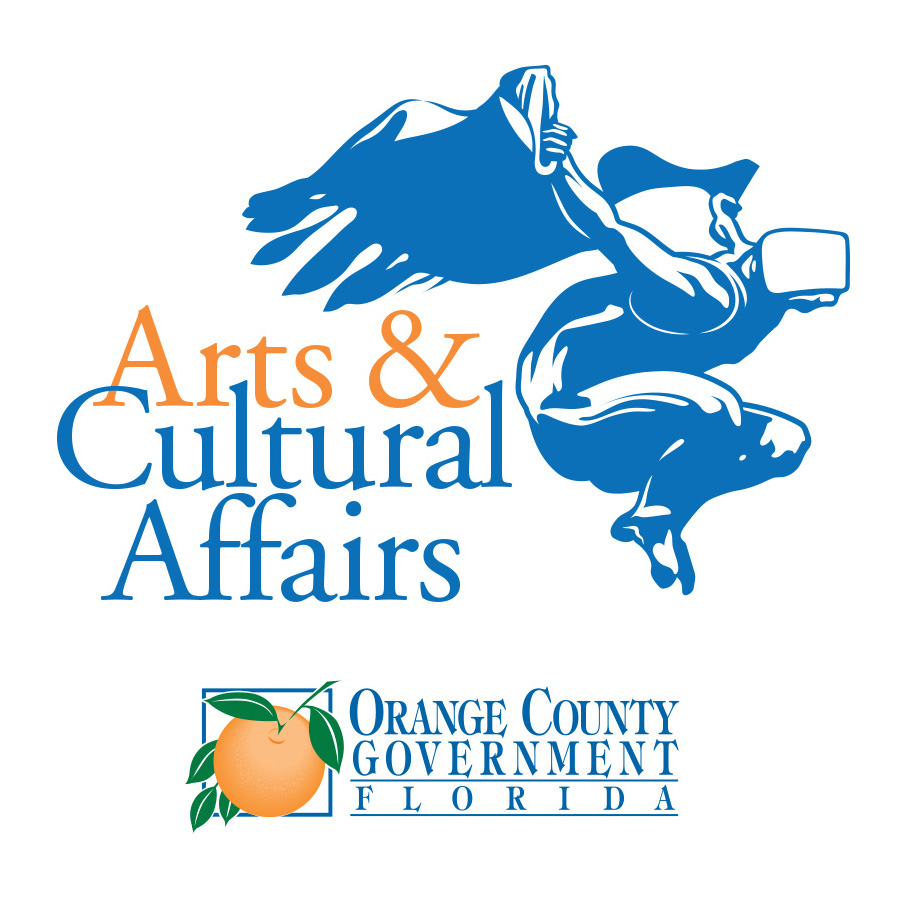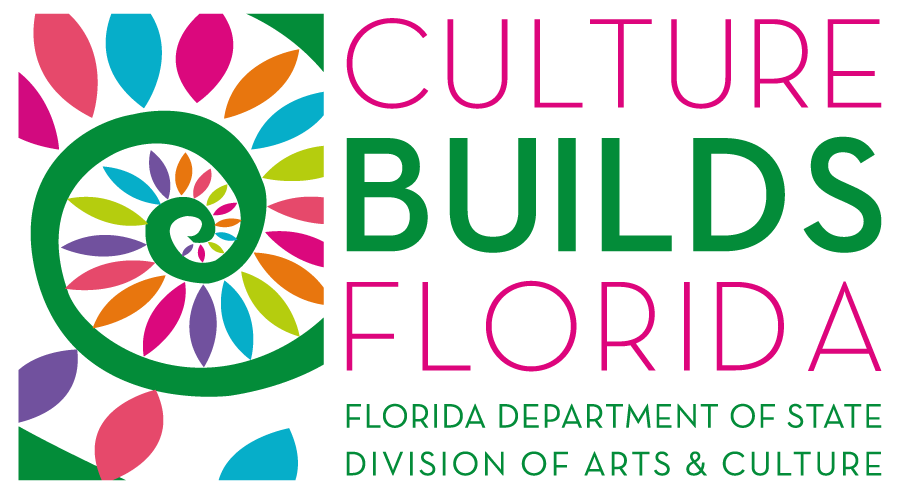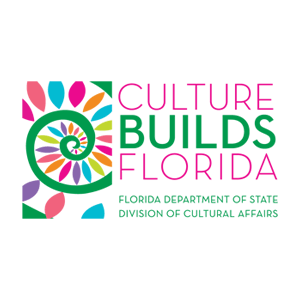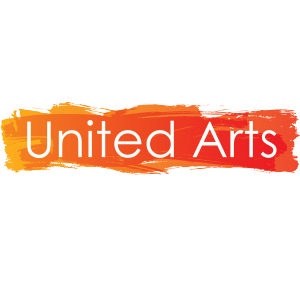Permanent Exhibits
The museum’s permanent exhibit presents an overview of the history of the Holocaust and serves as a memorial to the victims. The displays in the museum are photographs and text, supplemented by artifacts, art works, and short film presentations.
Click the button below to view 360 virtual tour of the permanent exhibit.
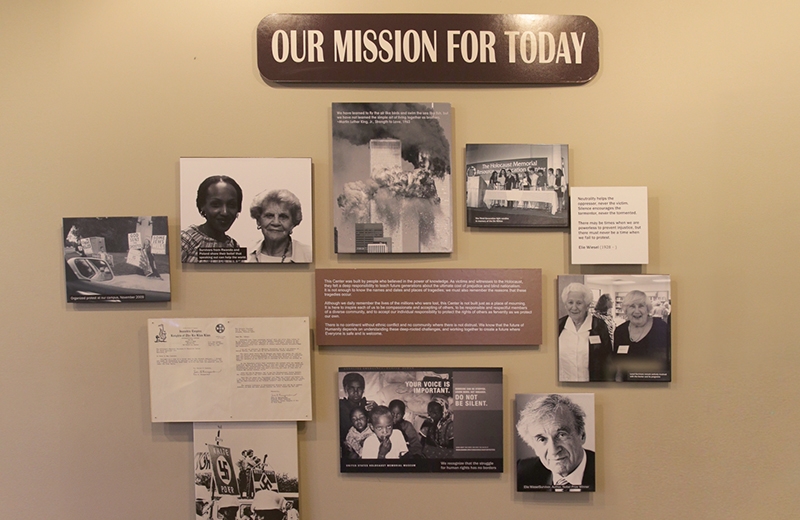
Our Dedication
“Whoever forgets, becomes the executioners’ accomplice.” – Elie Wiesel
Visitors are welcomed to the Holocaust Center with this iconic quote to demonstrate our obligation to remember the Holocaust and its victim, and our duty to lessen the chance of future genocides. The exhibit begins with a collage of images, including a letter from the local KKK and a photo of the Westboro Baptist Church picketing at the Holocaust Center. This haunting reminder that prejudices are still a danger in our world today sets the tone for the rest of the exhibit.
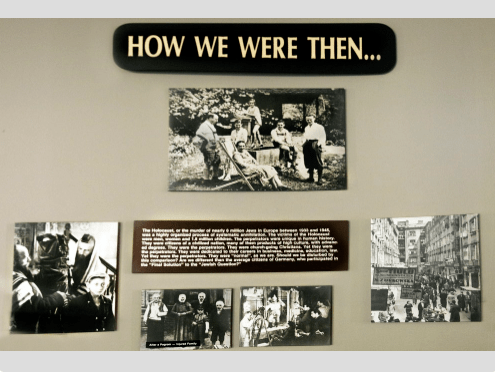
The Early Years
This section of the exhibit represents Jewish life before the Holocaust through a display of items, including a family Torah, passports, photos, and letters.
When the Nazi Party came to power in Germany, the persecution of the Jewish population deepened. Our display of Nazi memorabilia includes propaganda that emphasizes anti-Jewish sentiments. Panels explain how persecution became an organized program of physical violence with the Kristallnacht pogrom in November of 1938.
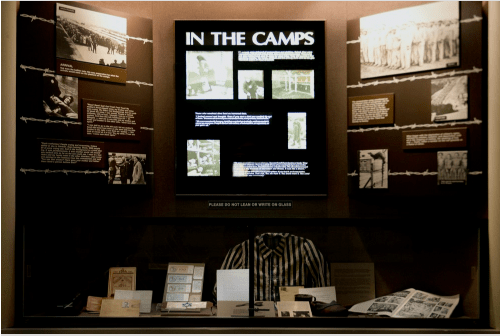
War, Persecution, Ghettos, and Camps
Panels describe how the Nazis began the destruction of the Jewish communities by forcing Jews into ghettos in Poland and other occupied countries. The ghettos quickly became places of starvation, sickness, and death. The Nazis began their program of mass murder. The artifacts of these camps are sorrowful reminders of the innocent people who were either sent to immediate execution or consigned to slave labor.
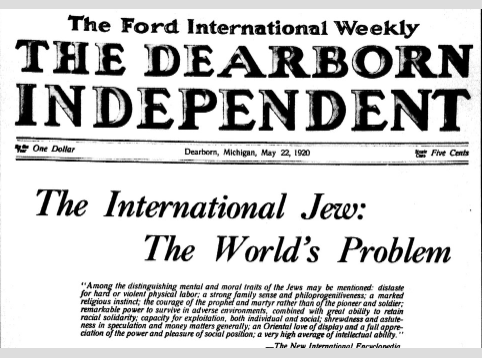
The United States Joining the War
Two display cases reflect America’s involvement in the war. Magazines and posters from before the war clearly show that the United States knew what was happening, but were reluctant to join the effort. Once we entered the war, memorabilia from wartime reminds us of the patriotism and sacrifice needed to conquer the Third Reich.
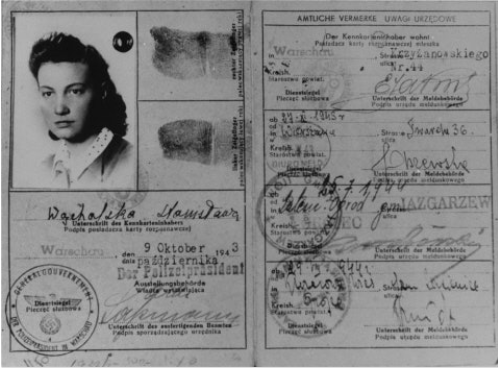
The Jews and Resistance
One of the most important lessons the Holocaust teaches is that the Jews did fight back at every opportunity, as shown in text and photographs. We also celebrate the non-Jews who resisted the Nazis and because of their efforts, they are now known as “Righteous Gentiles.”
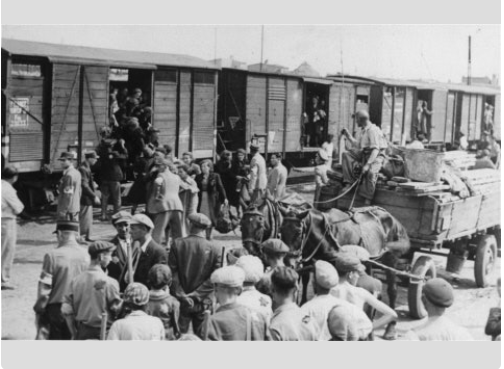
The Final Solution and End of the War
This museum display addresses the Nazis’ solution to what they called their “Jewish Problem”—mass murder. The hatred and destruction of the Jews, up to and including the final Death Marches at the end of the war, was the fanatical core of Nazi ideology.
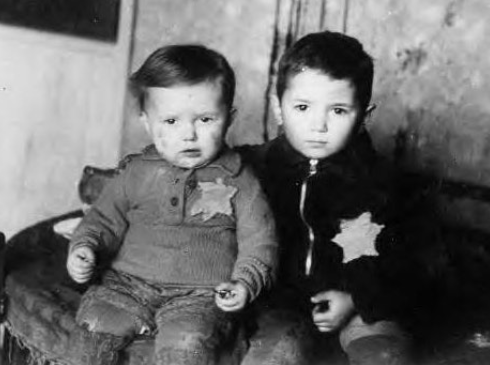
Witness Histories: Survivor and Liberator Testimonies
As part of the permanent exhibit, the Center’s special display, “Our Story,” features the histories and images of local survivors. They came from different nations, survived in a multitude of ways, and bear witness to the strength and courage of their lives.
The tour of the Holocaust Center includes a video presentation that introduces museum visitors to local Holocaust survivors and liberators. Excerpts from their recorded stories bring to life their experiences and hopes, with powerful reminders of the lessons learned here.
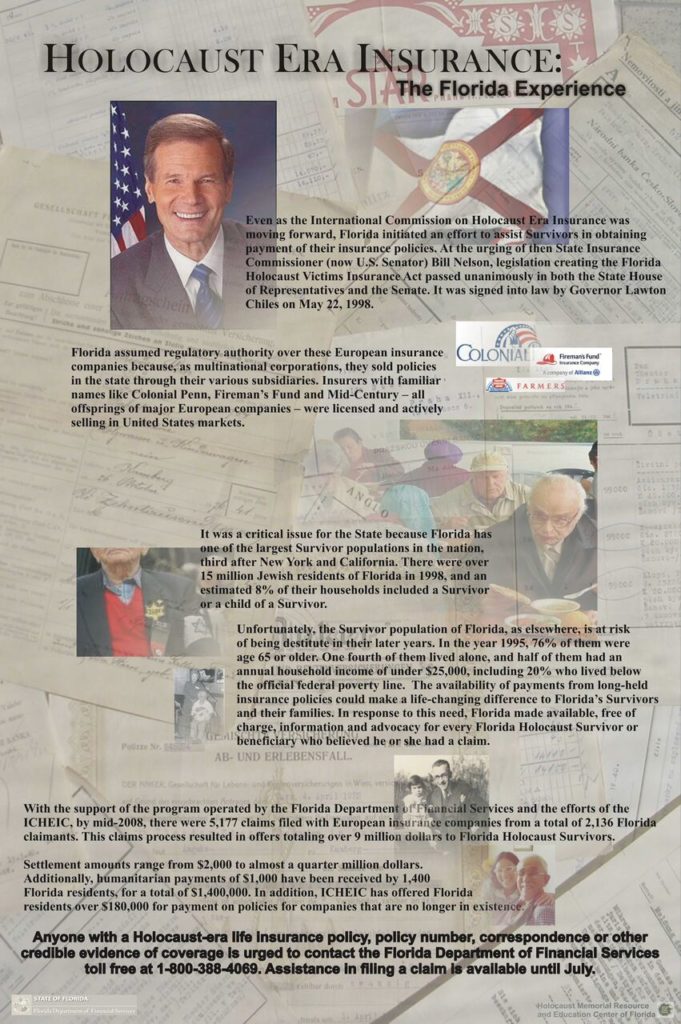
Holocaust Victims Assistance Act
In pre-war Europe insurance policies were a popular form of investment, yet very few families were able to collect benefits at the end of the war.
Florida was one of just a handful to states that set up its own commission to help policyholders successfully file long-delayed claims. This exhibit details the history and the importance of Florida’s efforts.
Since 1998, the Florida Department of Financial Services has been providing assistance to Florida Holocaust survivors seeking to recover proceeds from insurance policies issued to Holocaust victims and restitution for Nazi-confiscated bank accounts, art and property. Although many of the deadlines have passed for submitting claims to compensation programs, it may be possible to submit a claim directly with the financial institution or with remaining open restitution funds. The Florida Department of Financial Services provides education and assistance to Holocaust survivors regarding restitution programs from Germany, Poland, the Czech Republic, France, Austria, Hungary and other countries. Information and assistance is also provided to individuals seeking access to much needed home health care services.
For more information, please visit https://www.myfloridacfo.com/Division/Consumers/Holocaust/
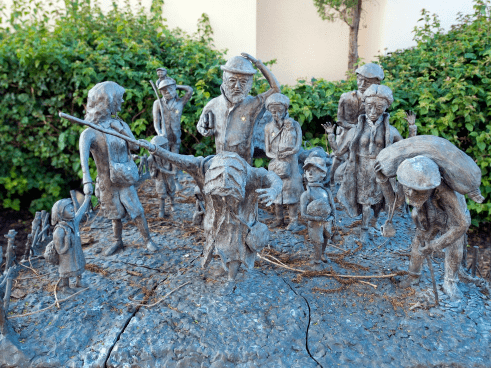
Artifacts and Works of Art
Throughout the building, there are pieces of art, including dolls made in camps, sculptures created by survivors, posters, and original works of art, that remind us of why we must keep the promise of “Never Again.”
Six memorial lamps are installed at the front wall of the museum to represent the six million Jewish Holocaust victims. Based on the tradition of lighting candles on the anniversary of a death, these flames honor the people and cultures that the Holocaust nearly destroyed.
